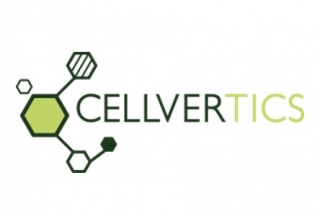기업
Cellvertics is developing a new drug for metabolic diseases through activation of mitochondrial ATP generation.
by Jongwon Jang
development in earnest by introducing technology related to intracellular ATP production from Korea University and the KIST.

The newly started venture ‘Cellvertics’ takes up the new challenge of developing new drugs that target various diseases, including metabolic diseases, by introducing the technology to activate the energy metabolism of mitochondria.
Cellvertics announced on May 23rd that it has signed a technology transfer agreement with Korea University and the Korea Institute of Science and Technology (KIST) related to intracellular ATP production.
Cellvertics is a new drug development company founded by Prof. Seo Hong-Seok of Korea University Hospital in 2017 (Cardiology Internal Medicine), with the aim of developing therapeutic agents for energy metabolism diseases. Since its establishment, Cellvertics has been involved in technology transfer, licensing, and development in cooperation with NewFlight, a bio-company builder.
Mitochondria, which are intracellular organelles that are devoted to energy metabolism, have recently been attracting much attention, as they have turned out to be a major cause of various diseases, including cancer, vascular diseases, and degenerative diseases. Commercialization studies for the development of new drugs through the regulation of energy metabolism are being actively carried out. Stealth biotherapeutics, which was listed on the NASDAQ market in February, is one of the leading companies that are developing mitochondria-targeting new drugs.
CEO Seo Hong-Seok, who has accumulated many years of experience in clinical research at the Cardiovascular Center of Korea University Guro Hospital, is now developing therapeutic agents at Cellvertics for various diseases caused by intracellular energy metabolism disorders.
‘CVT101’ is a new drug candidate developed by Cellvertics by modifying the structure of drugs that were already introduced to the market, and unlike existing drugs, has the effect of activating energy metabolism. Initially, the project started as the concept of drug repositioning, but was revised, through collaboration with KIST, to the designing of a new drug to maximize energy metabolic activation.
CVT101 can normalize energy metabolism disorder by enhancing mitochondrial ATP production function through binding to specific receptors inside the body. In particular, the existing drugs were used as therapeutic agents to control dysfunction by targeting one disease of a specific organ, while CVT101 commonly activates the cells’ energy generating function to restore the disfunction of various organs. CEO Seo said, “CVT101 can be used as a remedy to improve the underlying pathophysiology of diseases. We confirmed such possibility through various non-clinical trials.”
Through regulation of the basic energy metabolism, Cellvertics’ new drug can be applied as therapeutic agent for various diseases, including cancer, hypertrophic cardiomyopathy, cardiovascular diseases such as heart failure, metabolic syndrome, inflammatory digestive system diseases, skin diseases, and degenerative nervous system diseases. As CVT101 is a new drug developed based on the structure of the existing substance whose function has already been confirmed clinically, one of its advantages is low safety concern.
CEO Seo said, “After decades of years as a clinician of treating patients with vascular diseases, I felt the limitations of the existing drugs. But then I discovered and developed CVT10 that activates the mitochondrial energy metabolism. We will take up the challenge of developing a first-in-class new drug to enter a preclinical trial for approval.”


















